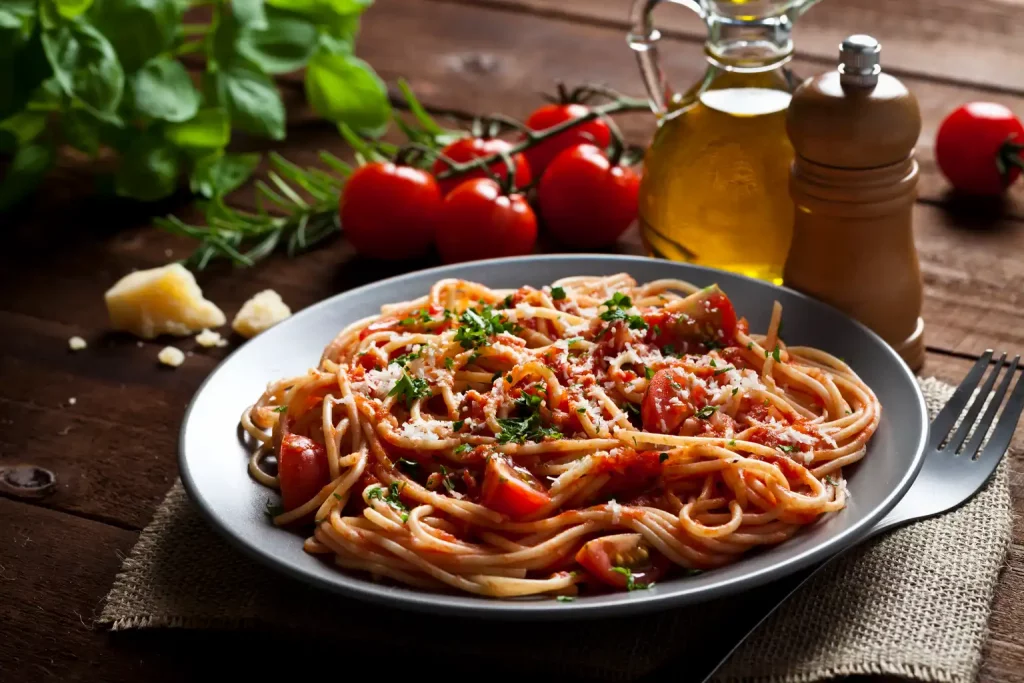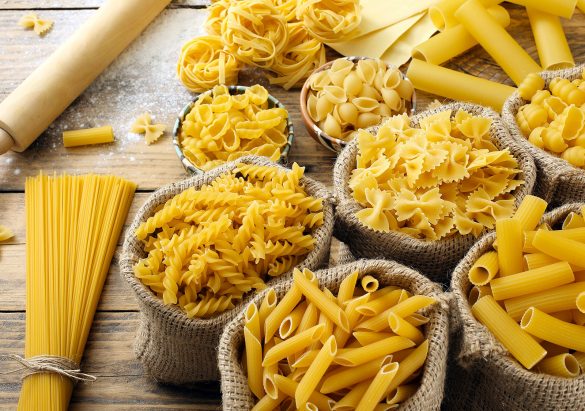In the vast food world, pasta attracts the taste buds of countless diners with its unique charm and soul. From its long and profound historical background, to its rich variety, to its exquisite production techniques and profound cultural background, pasta is not only a feast for the taste buds, but also a journey for the soul. This article will take you deep into the world of pasta, feel the flavor and soul behind it.
A bright pearl in the long river of history
The history of pasta can be traced back to ancient Rome, when residents of the Italian Peninsula began to use durum wheat flour products in various shapes. These products are different in form from modern pasta, but they are beginning to take shape. As the years passed, pasta gradually spread across the Italian peninsula and became an indispensable dish on the local tables. In the Middle Ages, with the development of trade and the increase of cultural exchanges, pasta gradually became popular throughout Europe and became a highly respected cuisine.
Especially during the Renaissance, the types and production techniques of pasta were greatly enriched and developed. Painters, sculptors, architects and other artists not only depict beautiful Italian cities with their creations, but also pass on the charm of pasta to the world through their brushstrokes and carving knives. At that time, pasta became an important part of Italian culture, it is not only a kind of food, but also an expression of art.
Pasta has taken the world by storm and become a common delicacy for diners all over the world. Whether in the bustling city or in the quiet countryside, whether in the high-end restaurant or in the ordinary family, pasta can always attract people’s attention with its unique charm.

Second, a wide variety of delicious choices
There are many different types of pasta in different shapes, each with its own unique taste and use. From slender spaghetti to elongated linguine, from layered lasagna to short noodles of varying shapes, each type of pasta has its own unique flavor and story.
Spaghetti, for example, is known worldwide for its elongated shape and unique taste. With tomato sauce, bolognese sauce and other toppings, you can create classic pasta dishes, such as spaghetti bolognese. That rich sauce and the perfect combination of noodles, leaving a lasting taste. The shell noodle is named because of its shape like a shell, its unique shape can better absorb the soup, with cream, cheese and other toppings, you can make a rich variety of cream pasta dishes. Every bite is filled with happiness.
In addition to the common types of noodles, there are also some special varieties of pasta, such as macaroni, spaghetti and so on. These noodles are made with different raw materials and processes, presenting different tastes and flavors. They can be smooth and delicate, or chewy, providing diners with more diverse choices.
Third, the inheritance and innovation of exquisite production technology
The production process of pasta is exquisite and unique, and every link contains the wisdom and sweat of the craftsman. From material selection, grinding to blending, pressing, cutting, drying and other processes, each step needs careful operation and strict control. It is this exquisite production process that enables pasta to achieve the ultimate in taste and quality.
In the selection process, high-quality durum wheat flour is the basic raw material for making pasta. This flour not only ensures the stringiness and elasticity of the noodles, but also allows the noodles to maintain their original shape and taste while cooking. At the same time, the rich nutrients in durum wheat flour also add more flavor to the noodles.
In the process of flour mixing, craftsmen need to adjust the proportion of gouache according to the water absorption of flour, temperature and humidity and other factors to ensure that the dough is soft and hard and easy to operate. This link requires craftsmen to grasp with rich experience and hand feel to ensure the quality of dough.
The pressing and cutting stages are the key steps in making pasta. Artisans need to use professional machines to press dough into noodles of different shapes and thicknesses, and use cutting knives to cut the noodles to the desired length and shape. In this process, the craftsmen need to precisely control the speed of the machine and the Angle of the cutting knife to ensure the uniformity and beauty of the noodles.
The drying process is the last step in making pasta. In this process, the noodles need to be slowly dried at the right temperature and humidity to ensure that the moisture in the noodles is fully evaporated without affecting the taste and quality. At the same time, the dried noodles also need to go through strict quality testing before leaving the factory for sale. This link puts a high demand on the patience and care of the craftsmen.
With the development of The Times and the improvement of innovation awareness, modern pasta continues to innovate and develop on the basis of inheriting traditional production techniques. Modern chefs combine traditional pasta with modern cooking techniques to create many new and unique pasta dishes. They use a variety of fresh ingredients and seasonings to create toppings or sauces that add more layers of flavor to the pasta; Or combine pasta with other ingredients such as vegetables and meat to create a nutritionally balanced dish. These innovative dishes not only enrich the taste choices of pasta, but also bring a new culinary experience for diners.

Fourth, profound cultural background and regional characteristics
Pasta is not only a kind of food but also a carrier of culture. In Italian culture, noodles symbolize family togetherness and happiness. Whether it is a weekend family dinner or festival celebrations, noodles are indispensable. At the same time, different regions and different nationalities have also formed their own unique noodle culture and cooking traditions.
In the northern mountains, residents like to use local cheese to make pasta. These cheese pastas are known for their rich creamy flavor and unique taste. In Tuscany, there is a classic pasta dish called “Pasta Amatriciana”, which uses fresh tomatoes, olive oil, garlic and other ingredients to create a rich sauce and pair with various shapes of pasta to make the whole dish beautiful and fragrant.
Naples, the home of pizza, also has a unique pasta tradition. There, Pasta Alapeperoni is a highly regarded pasta dish that uses cream, bacon, eggs and black pepper to create a smooth, tender and lingering taste. Sicily, on the other hand, is famous for its rich seafood resources and the local people combine various kinds of seafood with pasta to produce delicious seafood pasta dishes such as “Pasta al Levano” is a famous Sicilian seafood pasta cooked with sardines, pine nuts, cheese and other ingredients to create a rich, unique and intoxicating taste.
V. A new chapter in the integration of modern innovation and tradition
With the progress of The Times and the development of science and technology, pasta continues to integrate modern elements and innovative thinking on the basis of inheriting tradition. Modern chefs are constantly pushing the boundaries of pasta by exploring new ingredients, experimenting with new cooking techniques, and using state-of-the-art kitchen equipment. They not only combine pasta with modern food culture to create many new and unique pasta dishes, but also spread the charm of pasta to more people through social media and Internet platforms.
With the popularity of healthy eating and the increasing number of vegetarians, many vegetarian pastas have emerged.

